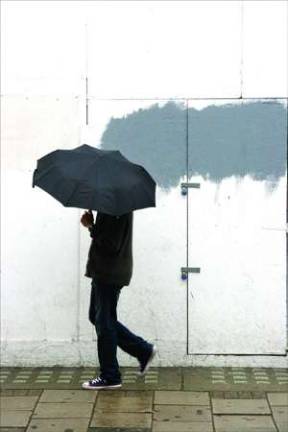London Street Scenes on the Upper East Side

The Museum of London has loaned its most popular temporary exhibit to the Museum of the City of New York (MCNY) in honor of the 2012 Olympic games in London this month. The East Harlem museum unveiled the expansive photography collection, as well as an original companion exhibit, last Friday to coincide with the start of the games. The borrowed display features photographs that record fleeting moments in London street life from the 1860s to the present-ordinary scenes of people in the midst of daily city life that follow the development of technology, culture and finance in a growing modern metropolis. It is accompanied by a new exhibit similarly designed to showcase the evolution of street life in New York City. Both shows will run through Dec. 2. "The exhibit has perfect timing, opening as the world's eyes fall on London this month," said Alex Werner, the Museum of London's head of history collections, who traveled to New York for the opening of the exhibition. London Street Photography, which has been on display at the Museum of London since 2010, is the museum's most visited temporary exhibit ever, drawing more than 125,000 viewers in the last two years. The exhibition contains more than 138 images taken by more than 50 photographers, with photographs arranged chronologically from 1860 to 2010. "The exhibit follows a changing society, following culture and economic conditions as they evolve over time," said Sean Corcoran, curator of prints and photography for MCNY. The London exhibition also features a short film screening called Behind the Lens, in which four photographers with images on display reflect on their work. In the documentary-style video reel, artists Wolfgang Suschitzky, Paul Trevor, Matt Stuart and Polly Braden talk about their experiences photographing scenes of everyday London life. City Scenes: New York Street Photography, the exhibit designed by MCNY to complement its London counterpart, is a smaller display of about 40 photographs taken between 1888 and 2002. The showcase includes several iconic New York images and boasts snapshots by renowned photographers such as Paul Strand, Diane Arbus, Jacob Riis and others. The New York display serves as both a comparison and a juxtaposition to the London exhibit, drawing parallels between the two major metropolises, which, Corcoran said, are very similar in many ways despite their differences. "[MCNY] is interested in urban life in New York, and what better way to explore that than to show life in a city, especially a city that is very culturally similar to New York but also different," said Corcoran, who curated the companion exhibition. He noted that similarities can be found in the progression of the technology and use of film in London and in New York. In London, famous photographers such as John Galt used imagery to provide social commentary, documenting the life of London's lower class. American Riis chronicled the living conditions of New York's poor, seeking to catalyze change by raising awareness through his work. One difference between the two cities, Werner noted, is that New York essentially replaced London as the world's vanguard urban center in the mid-20th century. In images captured in post-World War II London, photographers documented a city rebuilding its culture with a new and pervasive influx of American influence. "London was the largest urban center in the world in the beginning of the 1940s. Then, after the war, New York sort of took over as the largest city," Werner said.